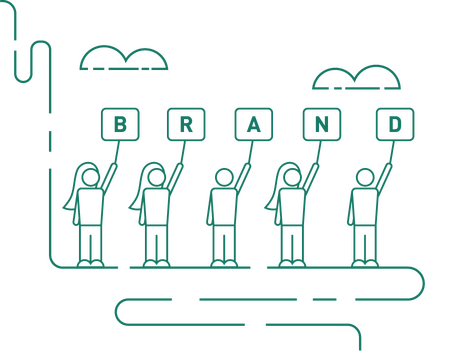2020State of Branding Report
Key insights into the trends and technologies set to shape the future of brand marketing.
Download the report
Introduction
Welcome to the 2020 edition of Bynder & OnBrand’s State of Branding Report. Together with independent research firm Survata, we surveyed 1,003 marketing and branding professionals from a range of disciplines and industries, aiming to get to the heart of the biggest questions in branding today.
Spanning the fields of marketing, tech, and creativity, this report reveals key insights that relate to some of this year’s most relevant talking-points and trends—split into four themes:
- Creative Automation
- Digital Sameness
- The Martech Explosion
- The Power of Brand
By tapping into the thoughts, challenges, and priorities of modern brand professionals, our insights will help you to take stock of what matters most in 2020, so you can plan for the year ahead with clarity and confidence.
Snapshot Summary
Before taking a deep dive into the results, here are our key takeaways for 2020:
- Marketers see faster, more efficient content creation as the best use of automation within branding
- User experience seen as the strongest brand differentiator in 2020
- “Choice and data overload” cited as one of the biggest challenges as marketing becomes increasingly tech-focused
- Respondents reveal “Growing brand awareness” to be the number one concern for their brand in 2020
- 2020 Brand, Tech, Marketing, and Martech Statistics - The essential list

Creative Automation
Marketers see faster, more efficient content creation as the best use of automation within branding.
Where do we draw a line when it comes to what can and cannot be automated?
Today’s marketers are on a constant quest to be more data-driven and tech-enabled in order to work ”faster, smarter, easier”, fueling what seems like the exponential growth of the global martech industry—now estimated to be worth up to $121.5 billion.
Where do we draw a line when it comes to what can and cannot be automated? Is the frequent focus on speed, ROI, and “quick wins” dimming a much-needed creative spark that helps brands differentiate themselves from competitors?
Opinion seems to be divided on this topic: 56% of respondents believe that AI and automation will negatively impact their branding efforts in 2020, with just 24% seeing it as a force for good. However, 23% think branding can’t be automated at all.
While the jury is still out on the vices and virtues of automation, our results revealed “creating content more efficiently and faster” to be the most popular use case for automation within marketing and branding efforts.
It seems many are still following the mantra that “content is king”, with 58% of those surveyed planning to increase their content production in 2020 by at least 25%, relative to 2019. However, this does not necessarily point to more time and resources being invested in content creation efforts for 2020. Instead, technology is enabling brands to create content faster, more efficiently, and in higher volume—with 1 in 2 respondents leveraging technology to automate administrative tasks associated with content creation.
What is the best use of automation for marketing and branding purposes?
Data and creativity to me is the marriage of lust and logic.—Julian Harriman-Dickson, HarrimanSteel

Digital Sameness
User experience seen as the strongest brand differentiator in 2020.
More than half of respondents plan higher investment in branded visual content.
Improving customer experience was revealed to be the number one motivation for investing in emerging technologies among respondents of our 2019 report. But has an increasing reliance on technology to craft user experiences left consumers swimming in a sea of digital sameness, with brands failing to communicate a unique, authentic—and fundamentally “human”—brand persona?
Modern consumers have more authority and choice than ever before regarding their purchasing decisions, so it’s no surprise that marketing circles are rife with experts preaching the importance of being “consumer-centric”.
A Walker study found that by the end of 2020, customer experience will overtake price and product as the biggest brand differentiator. Our survey respondents seem to be singing from the same song sheet: user experience was revealed to be more effective than “superior product innovation” when it comes to standing out from the crowd.
With that in mind, 1 in 3 respondents plan to optimize and/or improve their organization’s UX this year in an effort to differentiate their brand, while just 15% are planning to employ brand advocates in order to achieve the same goal. However, in the post-GDPR era, brands will do well to consider the impact of stricter security and privacy laws when crafting customer experiences: more than half of our respondents believe security and wider regulation are limiting the potential impact of their branding/marketing efforts.
Ultimately, content strategy is becoming increasingly intertwined with wider user experience goals, with our results showing 54% of those surveyed plan to invest more in branded visual content this year— continuing the upward trend from 2019 which also saw a year-on-year increase.
Do you think security and regulation are preventing your branding/marketing from reaching its potential impact and audiences?
No

No
Yes
If you make something for everyone, it won’t really appeal to anyone.—Zach Pentel, Spotify

The Martech Explosion
“Choice and data overload” cited as one of the biggest challenges as marketing becomes increasingly tech-focused.
Has the world of marketing technology hit a plateau, or are we still witnessing its Golden Age?
The state of affairs within the martech industry has been a contentious topic in recent years. While many have predicted the ‘martech bubble’ to finally burst and experience its own ‘dot- com moment’, the industry has experienced a year- on-year increase of 22% in comparison to 2019.
Trumping the bubble-bursting predictions, our data seems to support the wider growth of the martech industry, with 68% of respondents aiming to increase the number of martech solutions they use this year, and just 10% looking to reduce.
As marketing becomes more tech-oriented, the most frequently cited challenge was “skill gaps in the marketing team” that could enable organizations to effectively make use of their tech stack—with chatbots seen as the most overhyped technology of today.
There are also signs that the exponential growth of the industry has come at a cost, with the martech landscape becoming increasingly bloated: 40% of those surveyed were struggling with “data overload” and/or having “too many options to choose from”.
But who should drive the internal adoption of new marketing technologies in any given organization? It seems there’s a clear need for clarity on this subject according to our findings: 30% think IT should be responsible for driving internal adoption, while 31% believe it’s the responsibility of marketing.
In 2020, will you reduce or increase the number of marketing technology providers your brand uses?
Increase
Don't know
Decrease

Decrease
Increase
Don't know
Having more tools can mean more complexity, so it’s important to review your martech stack periodically to ensure every solution has its ROI in place.—Vojtech Boril, Kentico Kontent

The Power of Brand
Respondents see “growing brand awareness” as a number one concern for their brand in 2020.
Customers seen as more influential than marketers themselves when it comes to general brand perception.
What do consumers really value—and expect—from brands in 2020? A question seemingly on the minds of many of our respondents, with 43% citing “growing brand awareness” as the number one concern for their brand in 2020.
After all, the ever-evolving digital space has leveled the playing field for brands: those with the biggest budgets don’t necessarily bring in the biggest audiences anymore. Instead, consumers are increasingly discerning about the brands they choose to support, gravitating to those that share the same values, foster transparency, and ultimately talk to them like a human, not a prospect.
Social media has inevitably been a hotspot for brands looking to connect and engage with audiences. The rapid rise of social commerce, or more aptly omni-channel commerce, signals the increasingly blurred lines between different consumer touchpoints, and the need for brands to step up and provide a more seamless, interconnected customer experience.
Last year’s respondents cited social media channels as the most effective medium for reaching target audiences and influencing buyer behavior. Our 2020 findings continue that trend with 39% of those surveyed believing social has the greatest impact on brand visibility and perception.
Customers were also ranked as more important than marketers themselves when it comes to influencing a brand’s reputation— another sign that a brand’s marketing is largely carried by its consumers.
Which group will matter most to brand perception and visibility in 2020?
In today’s climate, one of the hardest things for modern brands to do is capture and retain customers. That’s why building a brand and being transparent about its values with customers has never been more important.—Josiah Koons, BANDAI NAMCO Entertainment America Inc.
Methodology & Demographics
This survey was conducted with Survata, an independent research firm based in San Francisco. Survata anonymously surveyed 1,003 marketing and branding professionals at organizations based in the United States and the United Kingdom between December 17, 2019, and December 27, 2019.
- Industry
- Technology 24.7%
- Healthcare 19.1%
- Financial services 17.1%
- Consumer 17.0%
- Industrial 12.6%
- Other 2.6%
- Company size
- 250 - 500 22.3%
- 501 - 1,000 25.5%
- 1,001 - 5,000 23.1%
- 5,001 - 10,000 14.7%
- More than 10,000 14.5%
- Job role
- Marketing operations 27.1%
- Marketing director/VP/CMO 20.7%
- Marketing manager 18.1%
- Brand manager 17.7%
- Creative services 16.4%
- Type of organization
- Business-to-consumer 54.9%
- Business-to-business 30.5%
- Non-profit/government 12.0%
- None of the above 2.6%
About Bynder & OnBrand
Bynder empowers some of the world’s most iconic brands with a digital asset management (DAM) service that simplifies the management of digital content and brand operations via a cloud-based portal that marketers love to use.
Helping organizations to manage and grow their brand is the bread and butter of Bynder’s business. We’re obsessed with “what’s next?” in branding, marketing, and technology; a question that culminated in us creating OnBrand.
Beginning as a small side hustle within Bynder, OnBrand aims to bring marketing and creative professionals together to discuss the trends set to shape the future of branding. Six years on, OnBrand has grown to become Europe’s leading branding conference, with 1,800+ curious marketers and creatives descending on Amsterdam each October to learn from the brightest names in branding today.
Check out bynder.com for more insights on how you can harness tech to grow your brand and accelerate workplace creativity.